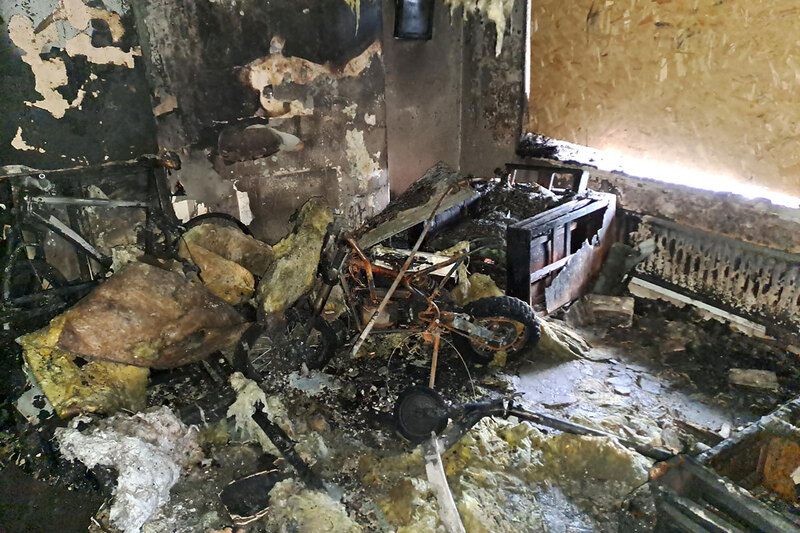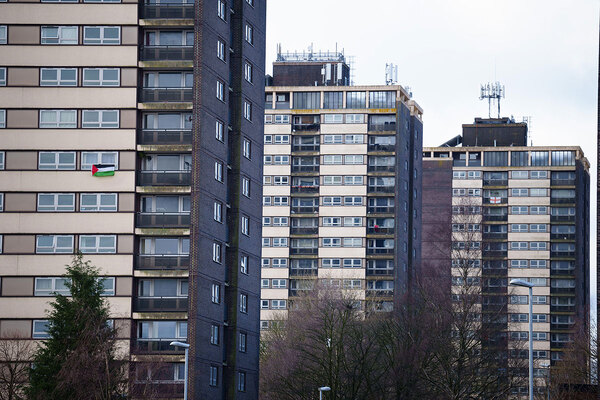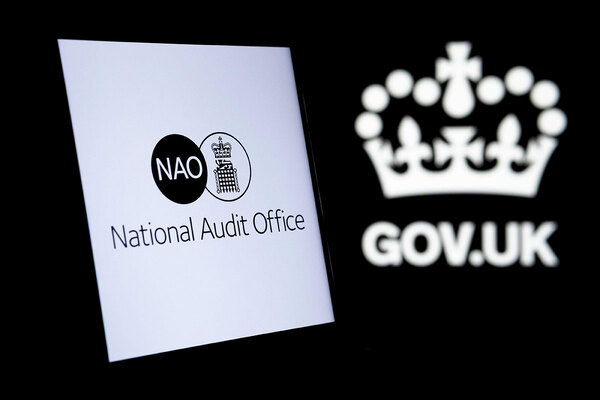You are viewing 1 of your 1 free articles
E-bike fires: a ticking time bomb for social landlords?
E-scooter and e-bike fires have shot up in frequency across the UK, with devastating and sometimes deadly consequences. Anna Highfield explores why the risks are so much higher for social landlords, and what housing management can do about it
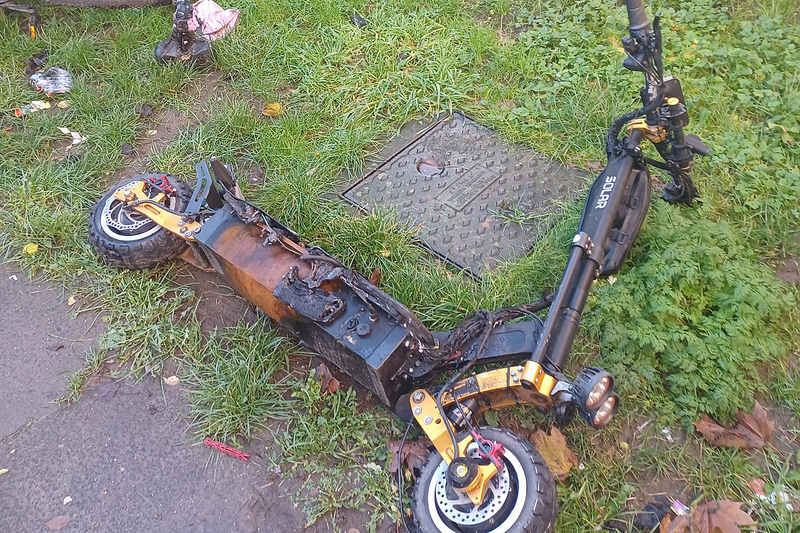
Key learnings
- The prevalence of e-bike fires has risen dramatically in recent years, and they are now seen as one of the “fastest-growing fire risks” in London, according to the London Fire Brigade
- These fires burn hotter and faster than normal fires, and are a particular risk in social housing settings for several reasons
- Minimising risk can involve educating residents and staff, increasing inspections of e-bikes, targeting higher-risk residences, and involving local services like the fire brigade
- There are common e-bike ‘red flags’ that resident-facing staff can look out for (see below)
“The smoke travelled through the kitchen, down the corridor, into the living room, and you could see the firefighters’ marks on the walls where they’d left a hand trail through the property, because of the density of the smoke.”
Stacey Thwaites, building safety project lead at Gentoo, describes the devastating scenes after an e-scooter fire tore through one of the housing association’s properties last year.
The fire, which started when an e-scooter caught fire in the kitchen of a domestic house in November 2024, was the second e-bike fire at a Gentoo property within a matter of months. The housing association had its first shock in June 2024, when a charging electric motorbike battery ignited in the living room of an upstairs flat, reducing the property to a blackened shell.
“It has become a really increased risk for us here at Gentoo,” says Gemma Darville, director of safety, risk and assurance at the housing association, which has 28,500 properties concentrated in and around Sunderland in the North East.
According to Ms Darville, Gentoo has seen an increase in customers using e-bikes, and an increase in fires associated with them, in line with rising demand for e-bikes as a rapid but affordable method of transport.
Thankfully, while the damage to properties and possessions was both extensive and costly, nobody was hurt in either of the Gentoo fires. Staff put this partly down to sheer luck that both fires broke out during daylight hours – but they dread to think how much worse things could have turned out.
“Lithium-ion battery fires burn so, so hot and so, so fast compared to a traditional fire,” says Ms Darville, who worries that “potentially these fires could also lead to an explosion”.
Across the UK, other e-bike fires have had deadly consequences. In March 2023, an e-bike battery ignited in a “grossly overcrowded” HMO property in Shadwell, east London, killing 41-year-old father of two Mizanur Rahman.
And in August 2024, an eight-year-old boy, Luke Albiston-O’Donnell, died after his older brother’s e-bike, which was charging in the living room of their Birkenhead home, burst into flames at 1.25am.
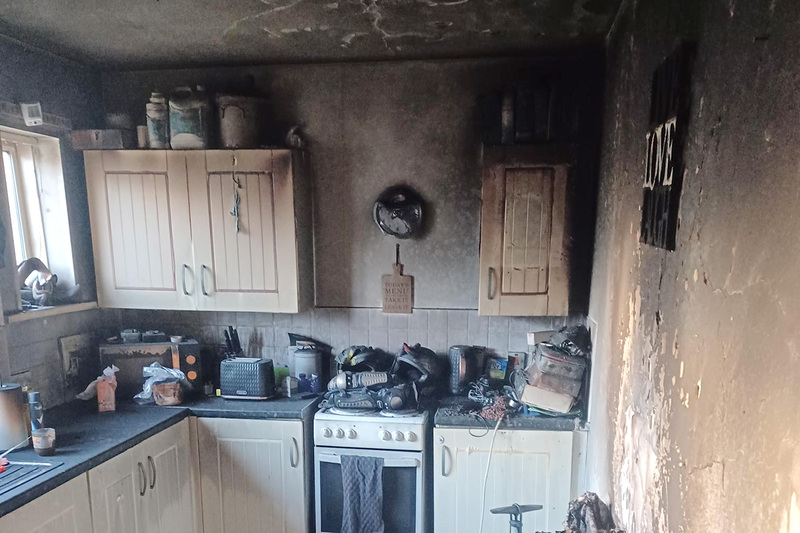
Both deaths follow an alarming spike in e-bike fires in recent years.
The number of e-bike fires recorded by the Greater Manchester Fire and Rescue Service leapt up year on year from 2020; rising from just four incidents in 2020-21 to a shocking 26 incidents in 2023-24, followed by another 26 in 2024-25.
Meanwhile, since 2023, the London Fire Brigade (LFB) has seen an e-bike or e-scooter-related fire on average every two days. In 2024 alone, the LFB recorded 143 e-bike fires and 27 e-scooter fires.
More than 100 people have been injured in these fires since 2023, and, sadly, three people have been killed – making e-bikes one of London’s “fastest-growing fire risks”, according to Richard Field, deputy assistant commissioner for prevention and protection at the LFB.
There is no doubt that e-bike fires are extremely dangerous, and incidents are on the rise. But why are they such a major concern for social landlords? To understand the risks, it is important to first understand the causes.
What causes e-bike fires?
E-bike fires occur when the lithium batteries powering these vehicles fail and explode, creating “ferocious fires [and] a toxic white vapour cloud that should never be inhaled”, according to the LFB.
E-bike batteries can fail for a number of reasons. Common causes include poorly built or counterfeit batteries, damaged batteries, overcharging, or even using the incorrect charger.
Failures are more common in cheaper e-bikes, according to the LFB, as these are more likely to have been modified, fitted or converted with second-hand products, or the batteries paired with incorrect chargers, putting them at greater risk of malfunctioning.
Why are e-bike fires a particular worry for social landlords?
E-bike fires are a “significant and newish risk” within the insurance world, according to Alix Bedford, risk, customer and partnerships lead at insurance agency Zurich Municipal, who says the trend is being driven by the increasing prevalence of e-scooters and e-bikes, on top of an increase in electrical faults.
Ms Bedford says the housing association sector is particularly suffering, with a higher rate of e-bike fire claims and queries compared to other markets.
There are multiple reasons for this. According to Nathan Louis, communications officer at the LFB, “often the devices involved [in the fires in social housing] have been purchased second-hand or a normal pedal cycle has been converted into an e-bike because that is cheaper than purchasing a manufactured e-bike”.
He adds: “We also tend to find that those who own the bike in question work for the gig economy, for example.”
For social landlords the disproportionate rate of e-bike fires is compounded by higher-risk settings, explains Ms Bedford, with high densities of tenants and higher rates of vulnerabilities, putting more people at increased risk from potential fires.
What can housing management do about it?
Now hyper-aware of the dangers, Gentoo has ramped up its efforts to deal with potentially deadly e-bike fires.
The housing association has consulted with fire engineers from Arup, and has been working closely with Tyne and Wear Fire and Rescue Service to carry out rigorous risk assessments, targeting its highest-risk buildings as a first port of call.
On top of managing 25 high-rise towers, Gentoo has 10 buildings built using large panel systems. Ms Darville explains: “If we were to have an explosion in one of those buildings, the structural damage would be more significant than to a more traditionally built building. So it’s a real priority for us to work with our customers to make sure that e-bikes, e-scooters and other lithium batteries are all really well-managed in those buildings.”
Gentoo has carried out a series of e-battery “health checks” across these 10 high-risk buildings. These are targeted at all residents who own an e-bike, e-scooter or mobility scooter, and are offered free of charge in partnership with the fire service and a local mobility specialist.
“In the [health check pilot scheme] we tested 20 vehicles, and one came back with a bit of a worrying report,” Ms Thwaites says. The vehicle “was then taken away, fixed and returned back to the customer”.
Other fixes included rearranging cluttered properties where a large mobility scooter was blocking the means of escape, and switching charging points from extension cords to mains plugs. Gentoo is now rolling out health checks across the rest of its high-rise housing portfolio.
Ms Thwaites told Inside Housing Management: “At Gentoo our first step would always be to speak to the customer to understand their use of the e-vehicle and charging habits. Some concerns can be addressed easily before you leave the customer's property, simply by explaining the dangers of extension cords or of having clutter near the e-vehicle. If you're unsure or if the concern is more complex, refer it your fire and building safety team and local fire and rescue service, using their safe and well checks to support the customer.”
E-bike ‘red flags’ for housing management
- Is the battery being charged in a cluttered area? Lithium-ion batteries get hot when charging, and if the charging area is cluttered, especially with flammable materials like clothes and blankets, these should be cleared.
- Is the battery being charged on an extension lead alongside multiple other plugs? Moving the plug to charge directly from the mains is much safer.
- Is the e-bike, e-scooter or mobility scooter blocking an escape route? If it caught fire, would it block the primary means of escape? If so, it needs to be moved, especially if the resident has mobility issues.
- Are there signs of damage on the e-bike, e-scooter or mobility scooter? Scorch marks around the battery, loose wiring and obvious signs that the bike has been bashed against something are all tell-tale signs that it’s in a bad condition and could pose a higher fire risk.
- Has a battery been left charging unattended, or overnight? This is the most common cause of an insurance claim related to e-bike and e-scooter fires, according to Zurich.
Salford-based Salix Homes has also been forced to confront its approach to e-bike safety, after a dramatic fire started by an e-scooter in a 10th-floor flat forced a full evacuation of one of its high-rise towers, Mulberry Court, in December 2022.
“It was caused by a lithium-ion battery that was just charging in one of the bedrooms. It kind of self-imploded,” says Tom Spencer, strategic lead for building safety and compliance at Salix. “We ended up evacuating six floors of that building.”
Thanks to the fire service’s rapid response, as well as the building’s early-warning fire system, nobody was hurt – but the damage cost £90,000 to rectify, according to Mr Spencer.
“The ideal situation is that no one has e-bikes at all, particularly if they come from a questionable source,” Mr Spencer says. “But I think it’s quite unrealistic of us to expect that.”
Instead, Salix has focused on what it can control, rolling out fire safety campaigns to highlight the risks, plastering images of the Mulberry Court aftermath on notice boards in every high-rise block it manages, and educating both customers and housing officers. It issued guidance for residents on how to use e-bikes safely, and trained housing officers on how to make a “quick, dynamic risk assessment” and take appropriate action when visiting properties.
The landlord also has strict measures in place to make sure any fires that break out in the future are contained and cause minimal damage to people or property – including high-quality fire doors, detection and sprinkler systems; good compartmentation; and careful maintenance of these systems.
“Ultimately, what we need is tighter national regulation of [e-bikes], so we don’t have to try to do all these things, because you’re trying to stay one step ahead all the time,” Mr Spencer says.
But until wider reforms take place, the dangers of e-bike fires in social housing settings will remain housing management’s burden to bear.
Subscribe to Inside Housing Management and sign up to the newsletter

Inside Housing Management is the go-to source for learning, information and ideas for housing managers.
Subscribe here to read the articles.
Already have an account? Click here to manage your newsletters.
Latest stories
